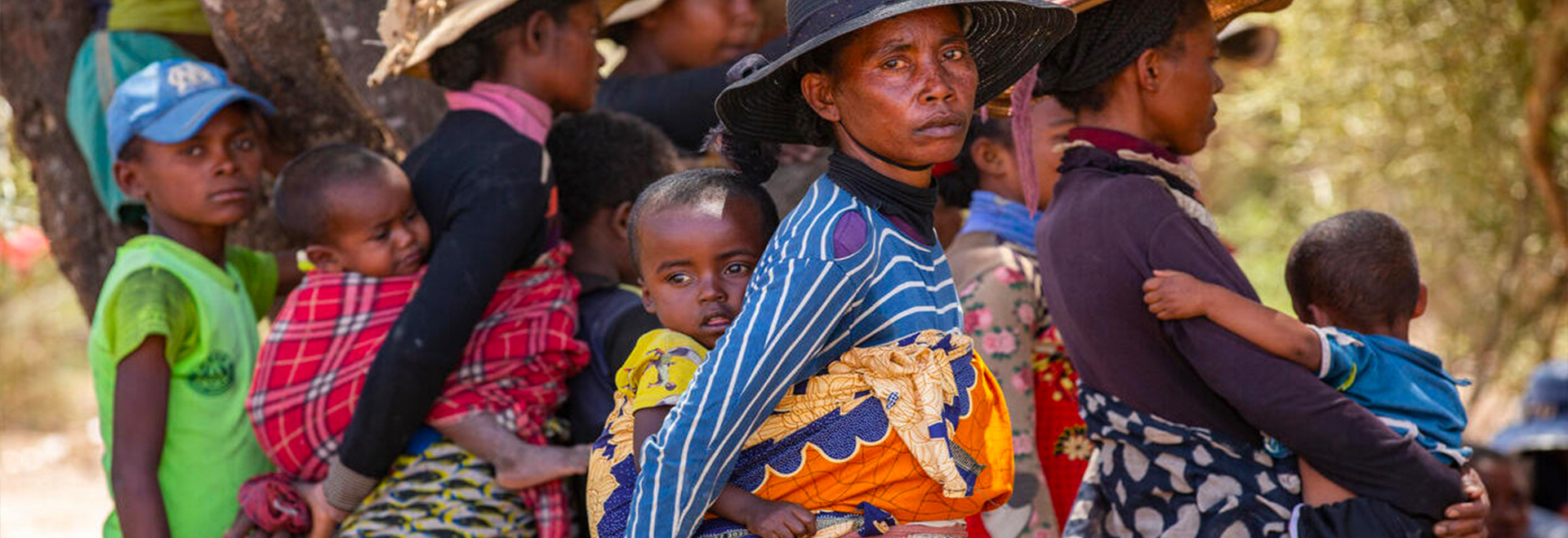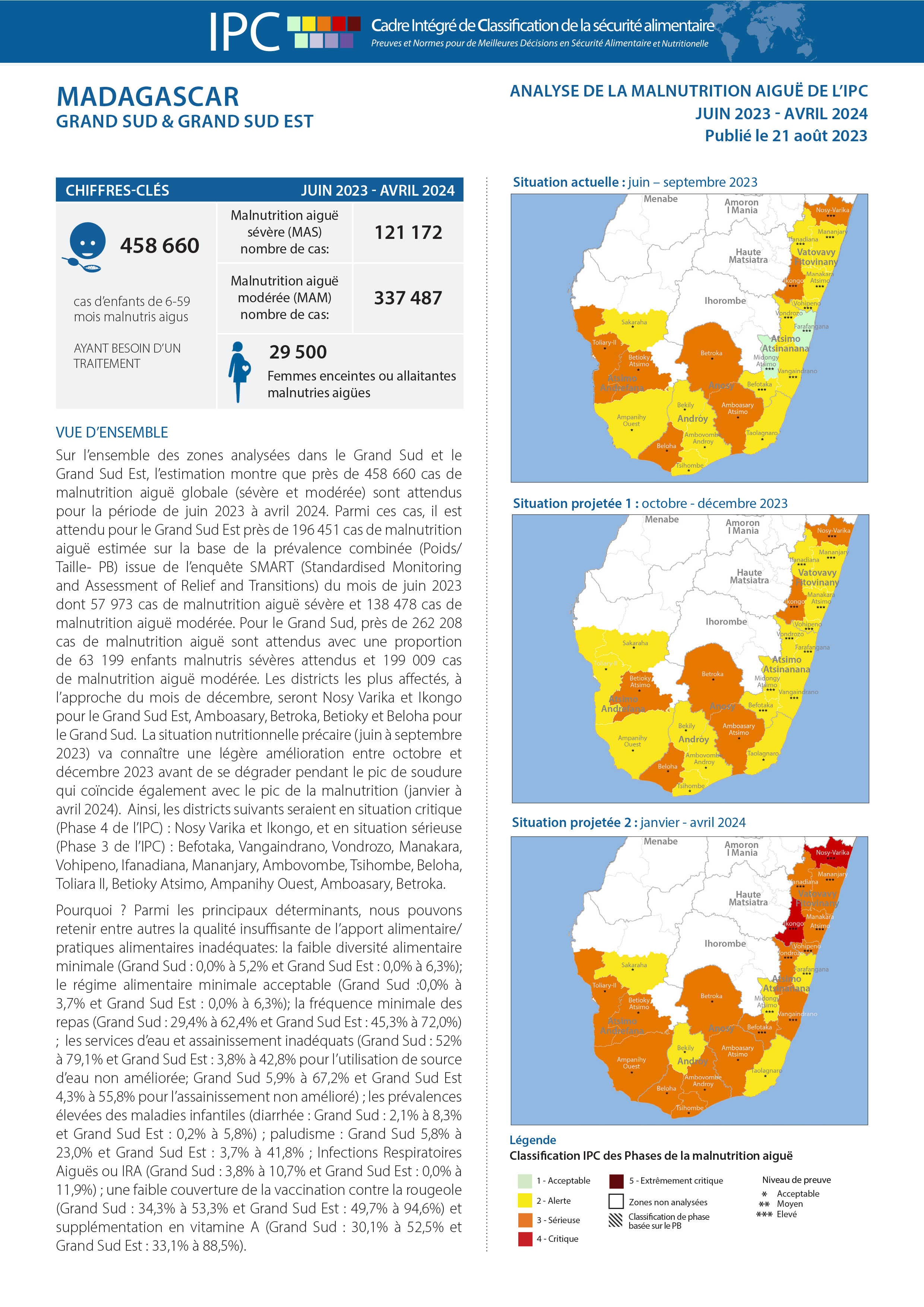
- © WFP
Southern Madagascar: Over 1 million people face high acute food insecurity, about 458,000 children under five likely to suffer from acute malnutrition through 2024
Acute Food Insecurity report
Since late 2022, Madagascar's Grand Sud region has seen a significant improvement in food security, surpassing expectations due to emergency measures; however, persistent vulnerabilities have left over a million individuals facing with high acute food insecurity, despite favorable harvests. Challenges such as high food costs, drought and cyclone damage have hampered the slow recovery from cyclones and drought in Grand Sud Est. In the current period (July to September 2023), approximately 16 percent of the analysed population across 22 districts are experiencing acute food insecurity, with the hardest-hit areas in the Grand Sud and Grand Sud Est regions. Projections for the upcoming periods indicate a concerning outlook, with an increasing number of people transitioning to higher food insecurity phases. Overall, 1.72 million people (26 percent of the analysed population) will likely require immediate assistance.
Download the report (French)
Download the snapshot (English)
Acute Malnutrition report
Between June 2023 and April 2024, the acute malnutrition situation in Madagascar is likely to worsen significantly. Approximately 458,700 children under the age of five are likely to suffer acute malnutrition. Among them, over 121,000 children are expected to suffer from Severe Acute Malnutrition (SAM) and nearly 338,000 children are expected to experience Moderate Acute Malnutrition (MAM). In the Grand Sud Est region, an estimated 196,451 cases are projected, with 57,973 children in SAM and 138,478 children in MAM. Meanwhile, in Grand Sud, nearly 262,208 children are susceptible to acute malnutrition, including 63,199 children in SAM and 199,009 children in MAM. The districts likely to be most severely affected are Nosy Varika and Ikongo in Grand Sud Est, as well as Amboasary, Betroka, Betioky, and Beloha in Grand Sud.
Download the report (French)
Download the snapshot (English)
Join our mailing list


